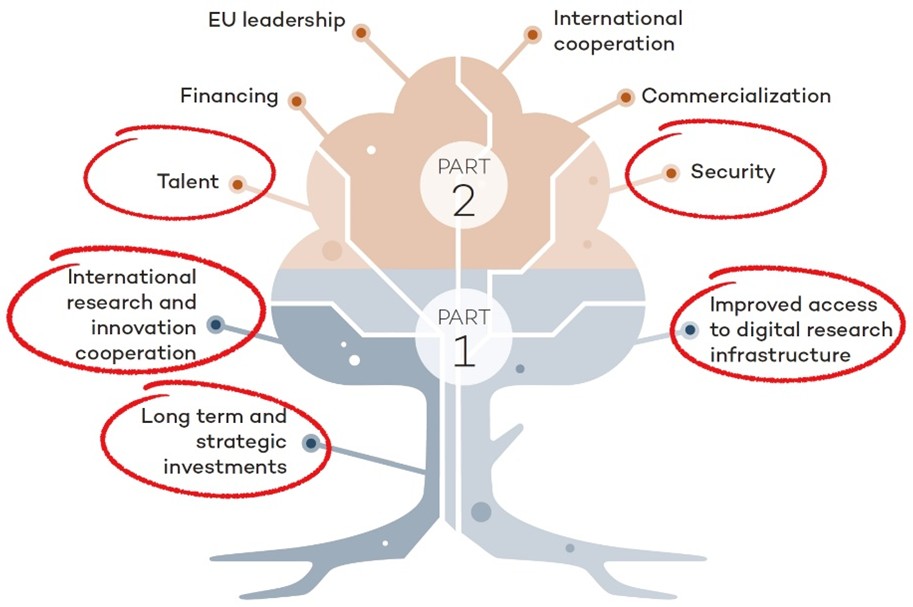QUCISAFE: Quantum-resistant Critical Infrastructure through PQC and QKD integration in the Cloud-Edge-IoT Continuum
Project: QUCISAFE — Thomas B. Thriges Fond

The QUCISAFE project addresses the growing cyber threats posed by quantum computers to Denmark’s critical infrastructure by developing an advanced hybrid security framework that integrates Post-Quantum Cryptography (PQC) and Quantum Key Distribution (QKD) technologies. This initiative responds to the urgent need for quantum-resilient security solutions, as demonstrated by the increasing frequency and severity of cyberattacks on critical infrastructure. By combining the practical benefits of PQC, such as ease of implementation and cost-effectiveness, with the unbreakable key exchange capabilities of QKD, QUCISAFE creates a comprehensive defense mechanism tailored for the Cloud-Edge-IoT continuum.
The project will address current challenges related to scalability, performance, and real-world deployment, ultimately delivering a robust, future-proof security solution for Danish critical infrastructure. Beyond its technical advancements, QUCISAFE aims to significantly impact Denmark’s educational and industrial sectors. The project will contribute to the development of a new generation of professionals skilled in quantum-safe technologies through its integration into Aalborg University’s (AAU) Cybersecurity master’s program. Led by AAU, in collaboration with the Technical University of Eindhoven (TU/e) and Terma, QUCISAFE not only contributes to strengthening national security but also brings Denmark closer to European and global partners in quantum-safe cybersecurity, reinforcing the country’s long-term technological resilience.
Objectives
There is a common agreement among worldwide researchers that integrating PQC and QKD into a unified hybrid security framework can effectively safeguard critical infrastructure against emerging quantum threats. This integration, specifically designed for deployment across the Cloud-Edge-IoT continuum, aims to address the current challenges of experimental validation, scalability, and performance inherent to PQC and QKD individually. By overcoming these limitations, the project seeks to develop a quantum-resilient security solution capable of meeting the stringent security and operational efficiency requirements of critical infrastructure in the post-quantum era. In particular, the scientific objectives of this research project can be summarized as follows:
- To design and develop a hybrid QKD & PQC system to guarantee the security of Cloud-Edge-IoT continuum against quantum attacks.
- To provide a Proof-of-Concept (PoC) implementation and evaluate the proposed QKD & PQC hybridization method.
Impact
QUCISAFE represents a novel initiative as the first PQC-QKD hybrid system adopted by a Danish company, aimed at enhancing communication security across various layers against quantum threats. As depicted in Figure 4, the focus of the project is fully aligned with the Danish Strategy for Quantum Technology, which will help explore new possibilities in quantum security [8, 9]. AAU leads this project, benefiting from specialized knowledge in quantum communication testbed development provided by the TU/e. By integrating both QKD and PQC into a comprehensive system, AAU will strengthen protection against sophisticated cyber threats anticipated in a post-quantum world for the Danish industry.
In addition to its technical and commercial objectives, QUCISAFE also aims to contribute significantly to the educational and professional landscape in Denmark. By incorporating the project’s findings and technologies into the curriculum of the AAU Cybersecurity master’s program, the initiative will help develop a new generation of cybersecurity professionals skilled in quantum-safe technologies. Furthermore, through targeted training activities at Terma, the project will enhance the capabilities of the existing workforce, ensuring that Danish companies are well-equipped to safeguard critical infrastructure. This focus on education and training is not only vital for national security but also provides Danish companies with a competitive edge on the international stage, positioning them as leaders in the rapidly evolving field of quantum-safe cybersecurity.

Partners
- Aalborg University, Denmark (Coordinator)
- Terma A/S, Denmark
- University of Technology of Eindhoven, The Netherlands
| People involved: | Sokol Kosta (PI), Edlira Dushku (co-PI), Mieszko Ferens (PostDoc), Samant Khajuria (Partner), Idelfonso Tafur Monroy (Partner) |
| Funding source: | Thomas B. Thriges Fond |
| Budget: | 2 599 834 DKK |
| Duration: | 01/04/2025 → 30/09/2027 |
| Project website: |